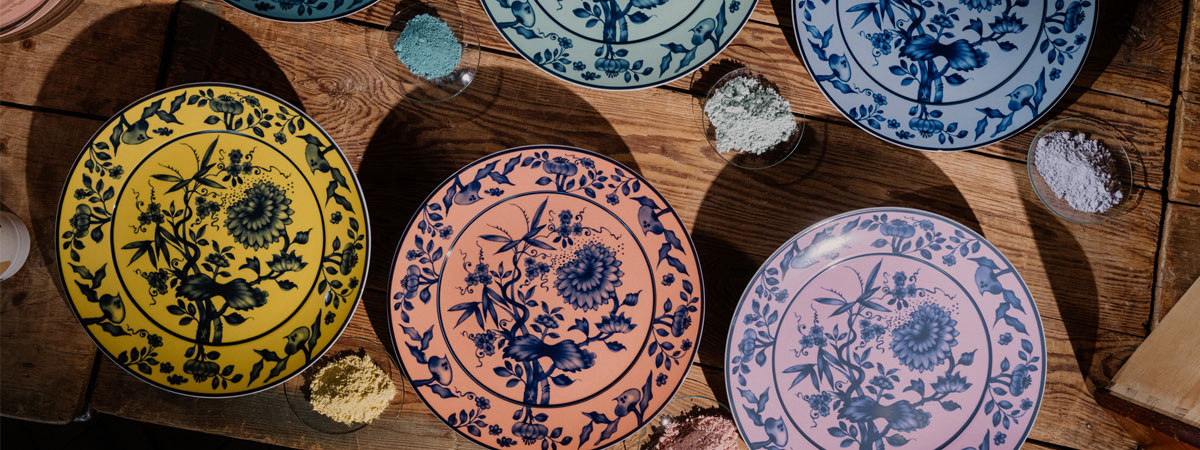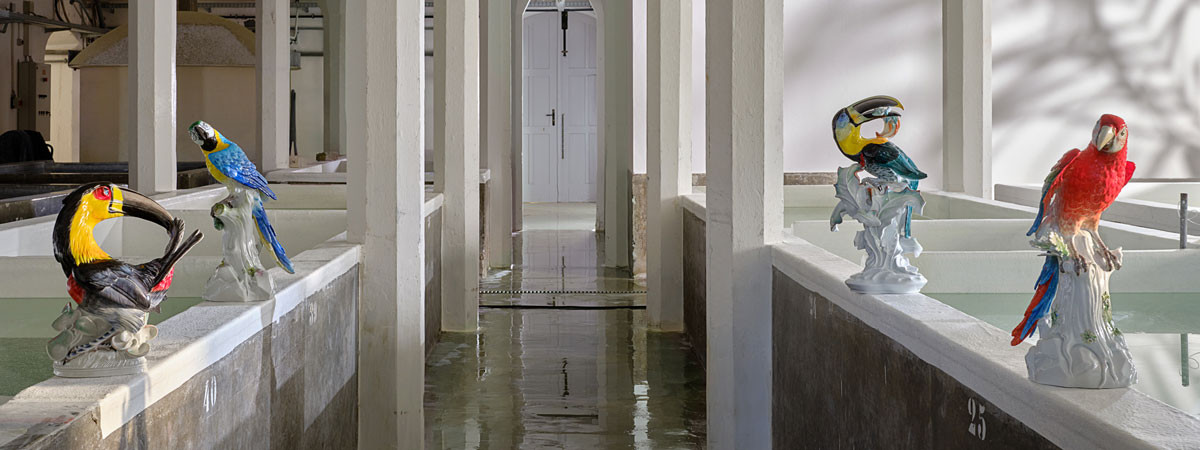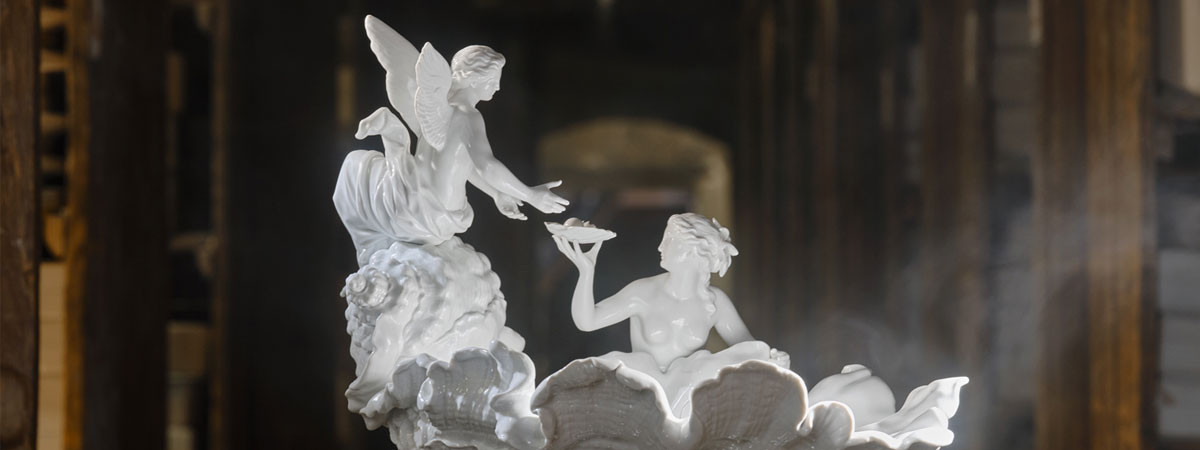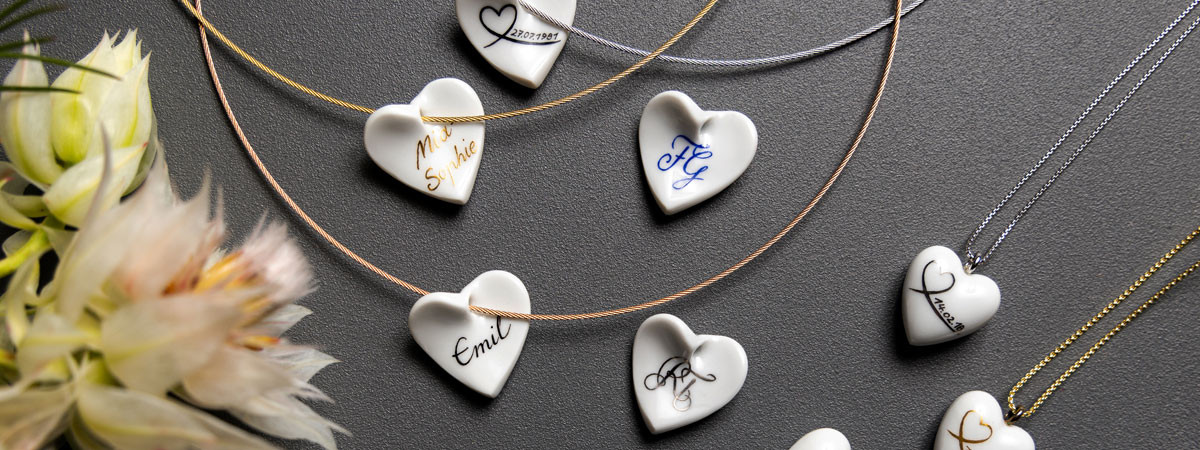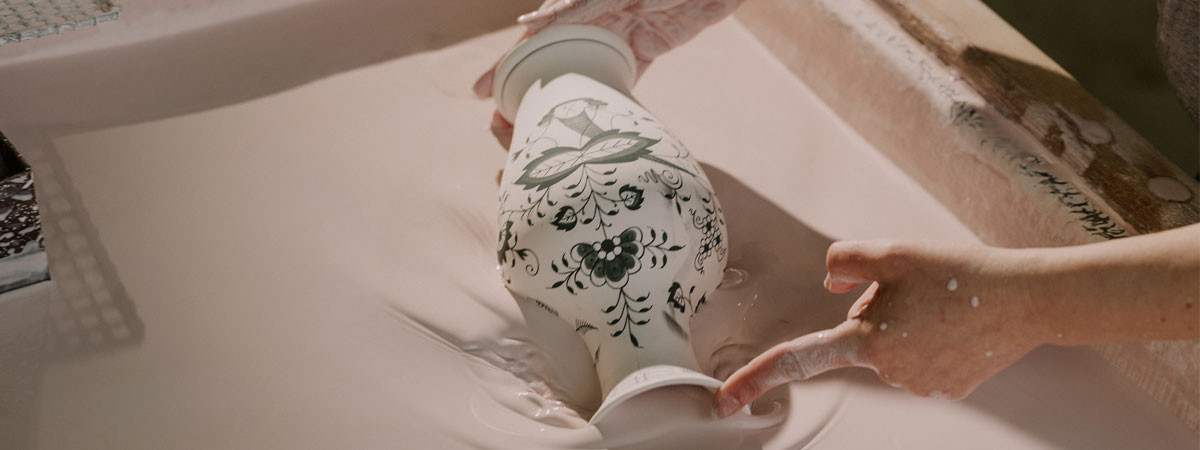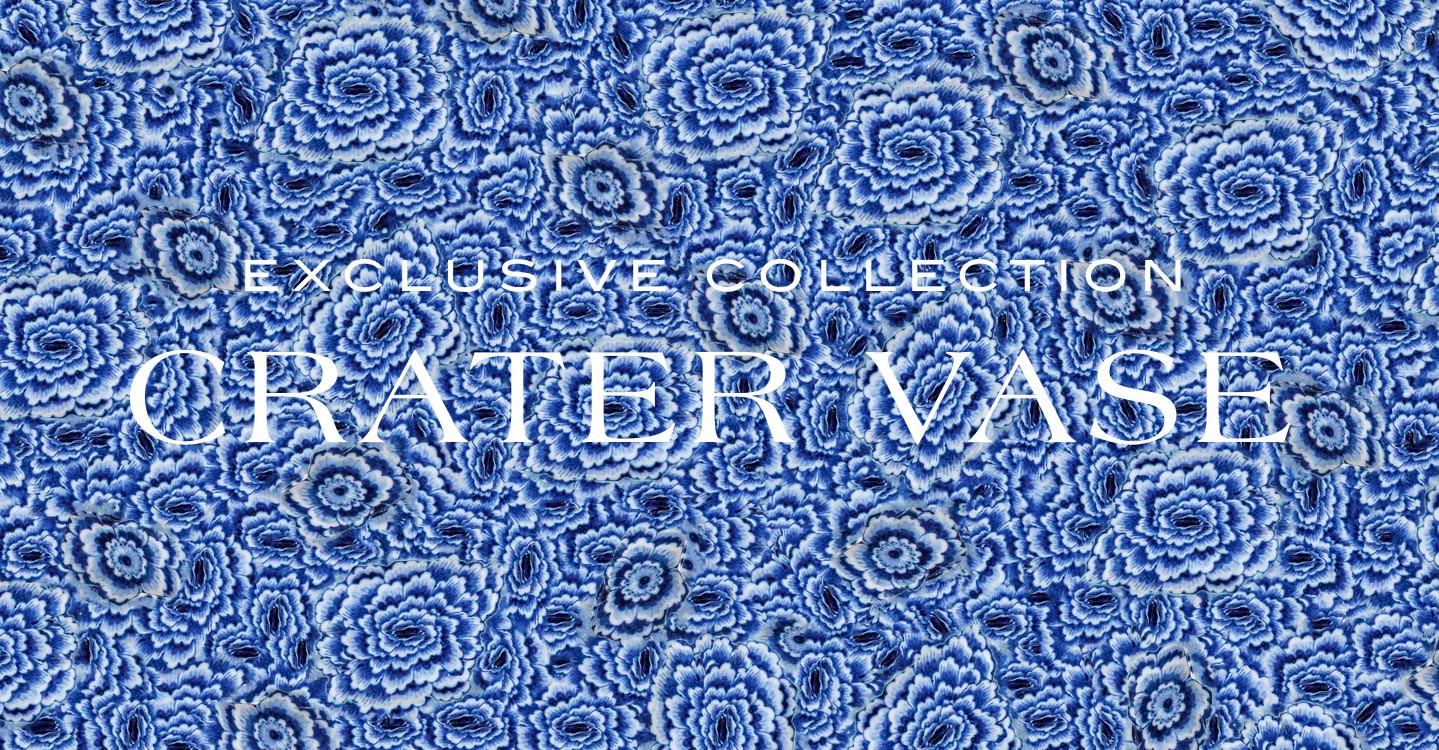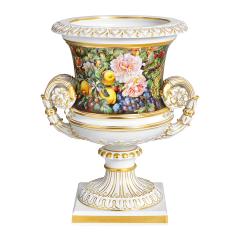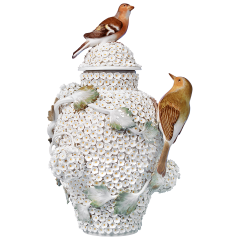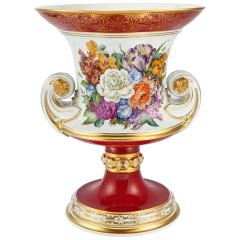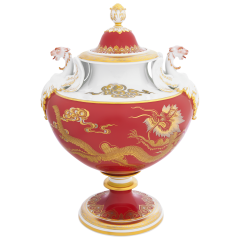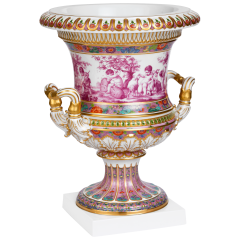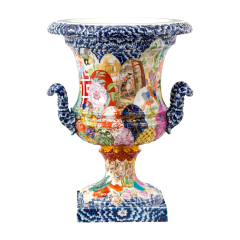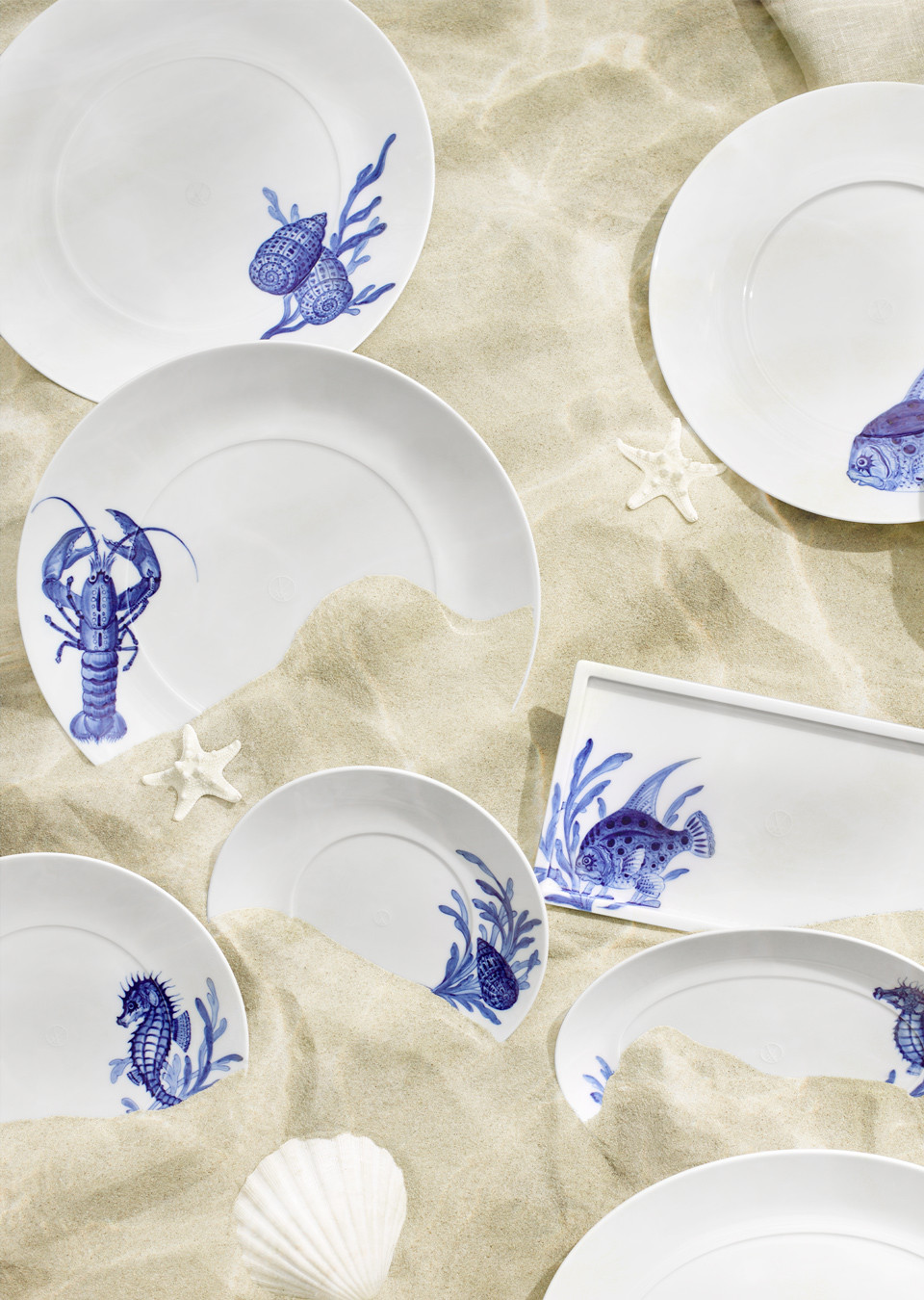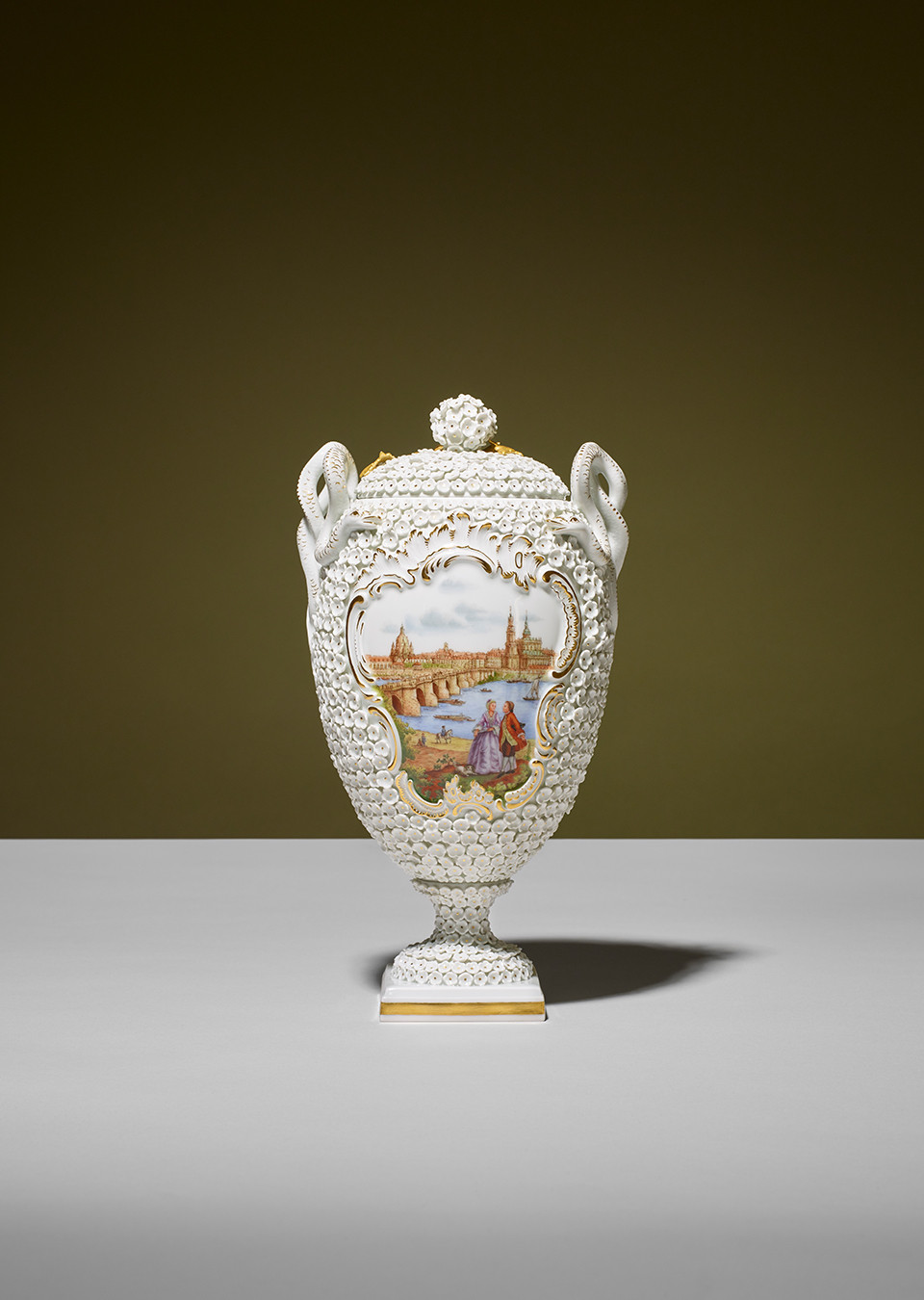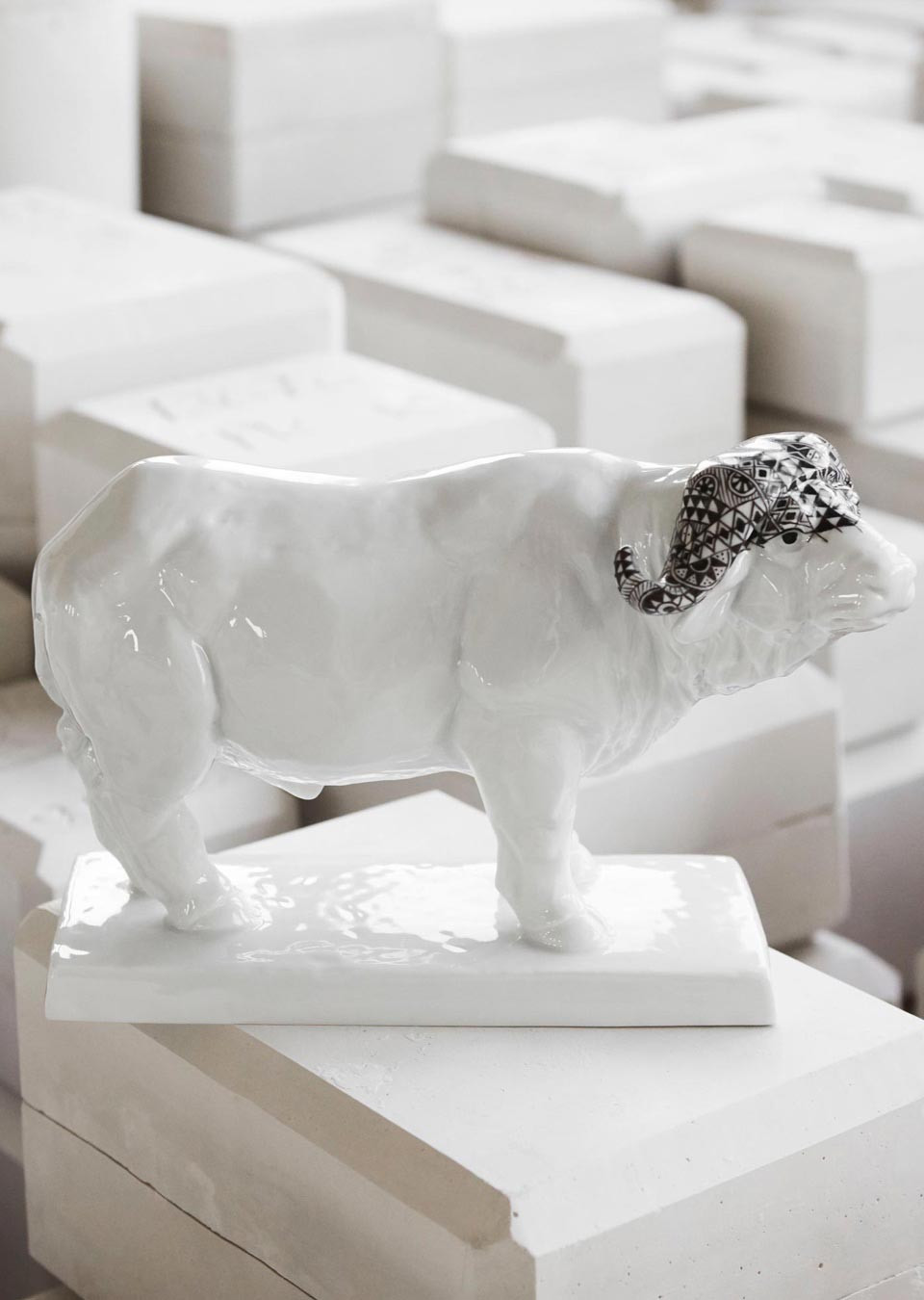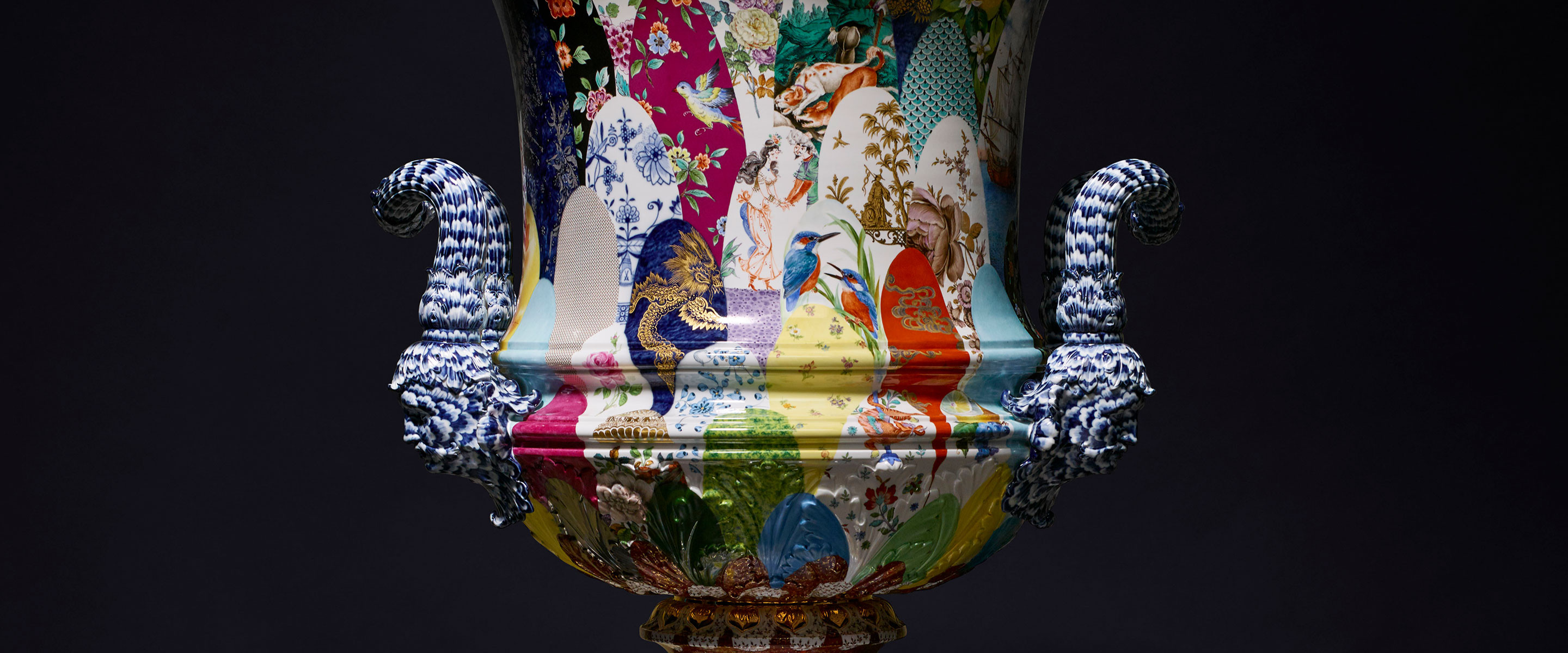
MEISSEN ICONS: THE CRATER VASE
-
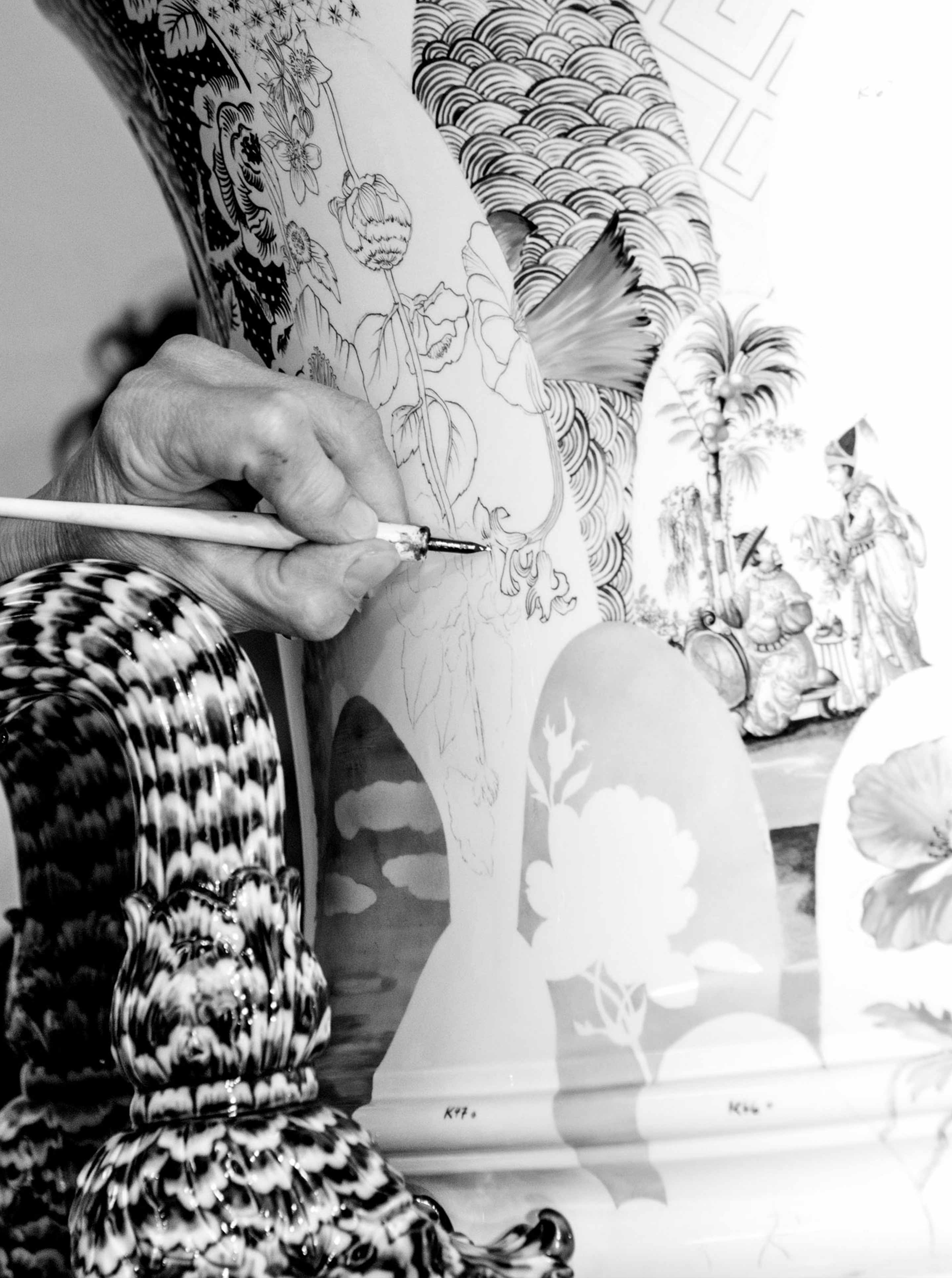 A true masterpiece, this lavishly embellished vase boasts over 100 MEISSEN motifs – applied by 27 specialised painters by means of various techniques. The original design was conceived in 1856 by Ernst August Leuteritz. stood an impressive 33 inches tall and was a highlight of the London Exhibition of 1862. It has now been re-issued as a journey through the history of Meissen’s patterns. Sophisticated underglaze painting forms the point of departure, followed by over a sizeable gamut of patterns from all eras of manufactory production across 233 panels, catering for awe-inspiring impact.
A true masterpiece, this lavishly embellished vase boasts over 100 MEISSEN motifs – applied by 27 specialised painters by means of various techniques. The original design was conceived in 1856 by Ernst August Leuteritz. stood an impressive 33 inches tall and was a highlight of the London Exhibition of 1862. It has now been re-issued as a journey through the history of Meissen’s patterns. Sophisticated underglaze painting forms the point of departure, followed by over a sizeable gamut of patterns from all eras of manufactory production across 233 panels, catering for awe-inspiring impact.
In the first “whiteware production” phase, plaster moulds are used to fashion the body of the vase and separate companion parts. These are turned into the plaster moulds with throwing body and subsequently joined together. The process is assisted by a specially designed dye that ensures the vase’s sides are of the correct thickness whilst also creating internal contours. The plaster draws the water out of the liquid porcelain paste over a drying period of several weeks, leaving behind a solid ceramic body. Repairing, as an operation, requires years of experience and a fine sense of judgment. It is essential that the various porcelain parts match each other exactly. They are joined together with what is known as “luting slip” and the resultant seams and ridges are removed. The lavish handles and foliage are likewise affixed to the vase with great precision by hand. The handles are made up of a great many separate parts which the repairer skilfully attaches to the body of the vase in a number of operations.
"The design, as unique as it is impactful, offers a journey through Meissen’s own expertly established pattern cabinet."
-
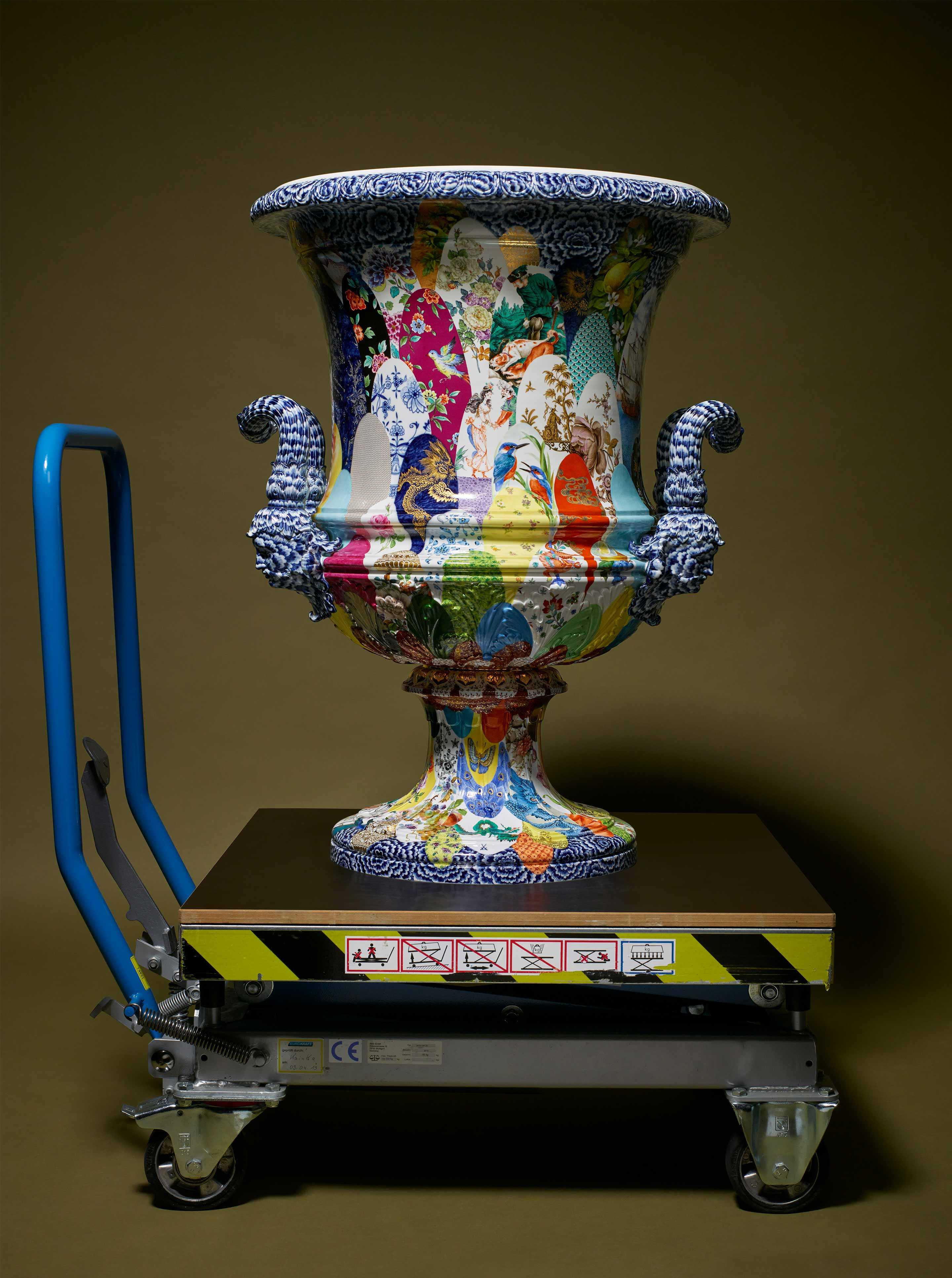 The first firing at a temperature of 900 °C is carried out as soon as the body of the crater vase and the affixed handles are sufficiently dry. The base is made and fired separately. This also make it easier to apply the Meissen trademark – the crossed swords – to the bottom of the vase. The underglaze decoration reminiscent of the traditional “Onion Pattern” is painstakingly painted on by hand. The paint is applied to the unglazed porcelain prior to its second firing. Cobalt blue is one of the few colouring substances capable of withstanding glost firing at 1,400 °C and thus produce the combination of blue and white for which the “Onion Pattern” is so well known.
The first firing at a temperature of 900 °C is carried out as soon as the body of the crater vase and the affixed handles are sufficiently dry. The base is made and fired separately. This also make it easier to apply the Meissen trademark – the crossed swords – to the bottom of the vase. The underglaze decoration reminiscent of the traditional “Onion Pattern” is painstakingly painted on by hand. The paint is applied to the unglazed porcelain prior to its second firing. Cobalt blue is one of the few colouring substances capable of withstanding glost firing at 1,400 °C and thus produce the combination of blue and white for which the “Onion Pattern” is so well known.
The crater vase is glazed before undergoing its second firing, a process that protects the underglaze painting, including the crossed swords, and engenders the famous gleam of “white gold”. Further colours are now painted atop the glaze of the glost-fired porcelain. Here too the vase’s base and body are tackled separately. The myriad of decors include famous favourites from the manufactory’s over-300-year-old history: “Arabian Nights” by Prof. Heinz Werner, various copperplate engraving-inspired flower paintings, and the truly iconic “Ming Dragon”. The final work stage involves “enamel firing” during which the various overglaze colours fuse with the glaze. This occurs at 900°C in an electric kiln. It is a process that lasts about three weeks as the various layers of paint are slowly baked into the porcelain until they become dazzlingly brilliant.
Available for purchase online, a smaller incarnation of the 2018 reissue measure 36cm in height – a little less than half the size of the 2018 MEISSEN Icons edition. The design, as unique as it is impactful, offers not only a one-off artwork, but also a journey through Meissen’s own expertly established pattern cabinet.

